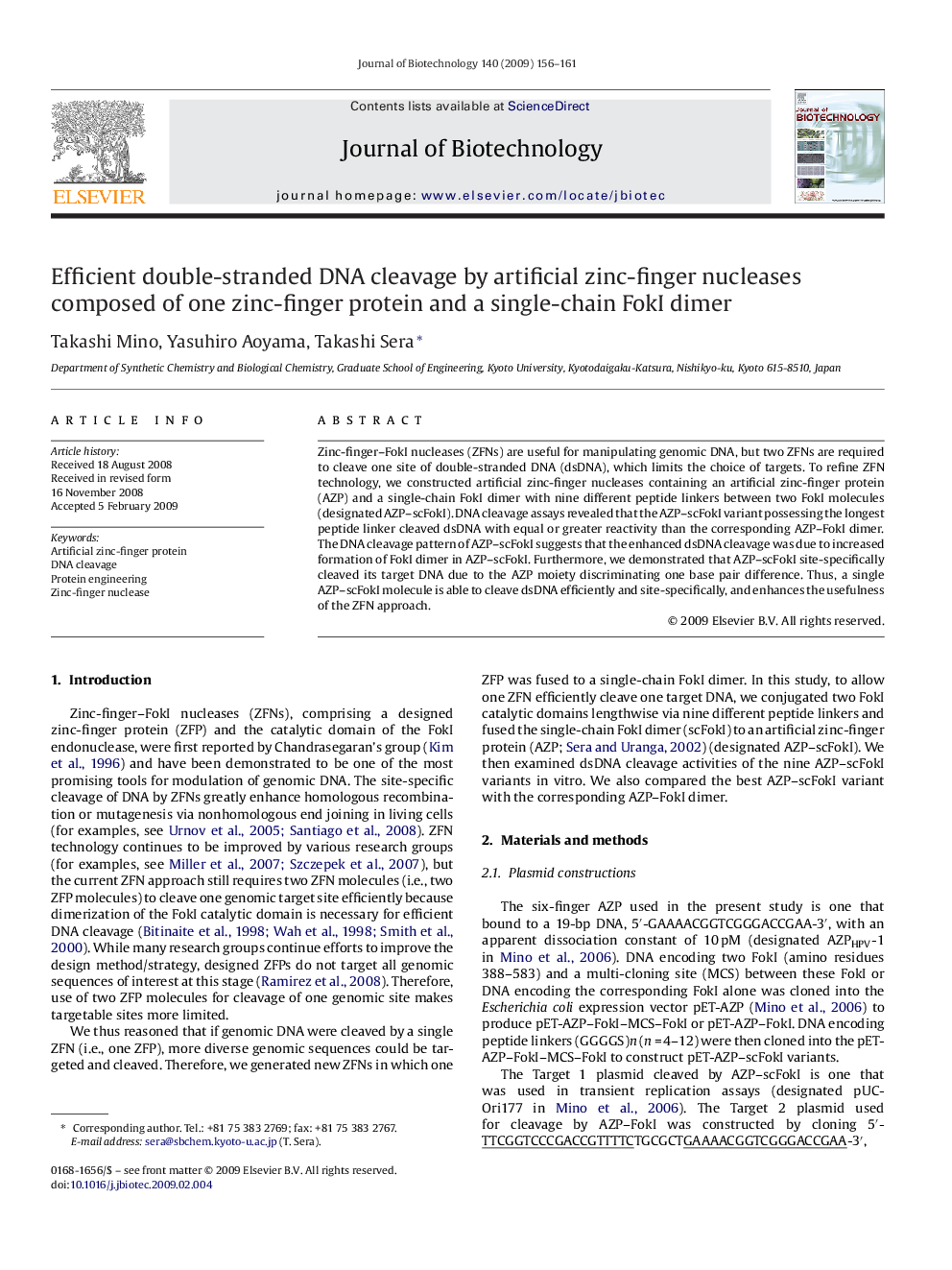| Article ID | Journal | Published Year | Pages | File Type |
|---|---|---|---|---|
| 24241 | Journal of Biotechnology | 2009 | 6 Pages |
Zinc-finger–FokI nucleases (ZFNs) are useful for manipulating genomic DNA, but two ZFNs are required to cleave one site of double-stranded DNA (dsDNA), which limits the choice of targets. To refine ZFN technology, we constructed artificial zinc-finger nucleases containing an artificial zinc-finger protein (AZP) and a single-chain FokI dimer with nine different peptide linkers between two FokI molecules (designated AZP–scFokI). DNA cleavage assays revealed that the AZP–scFokI variant possessing the longest peptide linker cleaved dsDNA with equal or greater reactivity than the corresponding AZP–FokI dimer. The DNA cleavage pattern of AZP–scFokI suggests that the enhanced dsDNA cleavage was due to increased formation of FokI dimer in AZP–scFokI. Furthermore, we demonstrated that AZP–scFokI site-specifically cleaved its target DNA due to the AZP moiety discriminating one base pair difference. Thus, a single AZP–scFokI molecule is able to cleave dsDNA efficiently and site-specifically, and enhances the usefulness of the ZFN approach.
